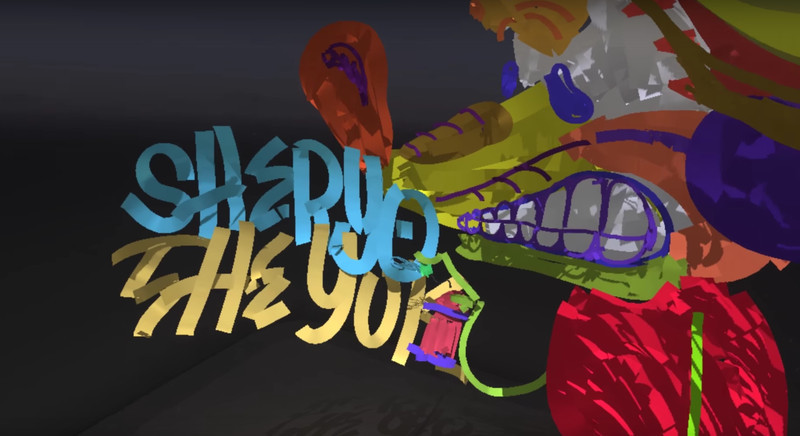Virtual Art Sessions - drawing in three-dimensional space from Google
Google's developers launched an art project that demonstrated the technology of drawing in three-dimensional space called Tilt Brush.
On the Virtual Art Sessions website page you can see in real time the process of creating three-dimensional pictures in virtual reality. Six professional artists took part in the Google project: illustrator Christopher Niemann, fashion designer and illustrator Katie Rodgers, sculptor Andrea Blasich, installation artist Seung Yul Oh, car designer Harald Belker (Harald Belker) and Sheryo & Yok, a duet of street art.

')
Artists created their three-dimensional paintings using the virtual reality glasses HTC Vive, VR-helmet and the recent development of Google - Tilt Brush. Using the motion controllers from the headset package of this application, users can draw in three-dimensional space. They have a wide palette of colors, textures and brushes. Tilt Brush has a variety of tools, thanks to which you can create fantastic pictures, which were shown by invited artists. In addition, the finished work can be considered from all sides.
The project Virtual Art Sessions allows you to look at the process of drawing by the artist, so to speak from the inside. The user watches a 360-degree video in which you can change the angle of view, rotate the picture, looking at it from all sides and even “become” to the place of its creator.

Video creation required developers to visualize an unusually large amount of data on a web page. It was possible to implement this with the help of JavaScript V8, while maintaining a good download speed for the movie.

Virtual Art Sessions is part of the Chrome Experiment , which was created to publish experimental interactive applications running in Chrome. During the duration of the project, more than a thousand technically unusual websites were launched. Chrome Experiment is interesting not only for developers, but also for ordinary users. Thousands of spectacular 3D visualizations have been published on the site, which can be studied and viewed for hours. To start you need only the Chrome browser.
For those who are interested in looking at the source code . The developers put it in open access (of course not for commercial use).
On the Virtual Art Sessions website page you can see in real time the process of creating three-dimensional pictures in virtual reality. Six professional artists took part in the Google project: illustrator Christopher Niemann, fashion designer and illustrator Katie Rodgers, sculptor Andrea Blasich, installation artist Seung Yul Oh, car designer Harald Belker (Harald Belker) and Sheryo & Yok, a duet of street art.

')
Artists created their three-dimensional paintings using the virtual reality glasses HTC Vive, VR-helmet and the recent development of Google - Tilt Brush. Using the motion controllers from the headset package of this application, users can draw in three-dimensional space. They have a wide palette of colors, textures and brushes. Tilt Brush has a variety of tools, thanks to which you can create fantastic pictures, which were shown by invited artists. In addition, the finished work can be considered from all sides.
The project Virtual Art Sessions allows you to look at the process of drawing by the artist, so to speak from the inside. The user watches a 360-degree video in which you can change the angle of view, rotate the picture, looking at it from all sides and even “become” to the place of its creator.

Video creation required developers to visualize an unusually large amount of data on a web page. It was possible to implement this with the help of JavaScript V8, while maintaining a good download speed for the movie.

Virtual Art Sessions is part of the Chrome Experiment , which was created to publish experimental interactive applications running in Chrome. During the duration of the project, more than a thousand technically unusual websites were launched. Chrome Experiment is interesting not only for developers, but also for ordinary users. Thousands of spectacular 3D visualizations have been published on the site, which can be studied and viewed for hours. To start you need only the Chrome browser.
For those who are interested in looking at the source code . The developers put it in open access (of course not for commercial use).
Source: https://habr.com/ru/post/393595/
All Articles